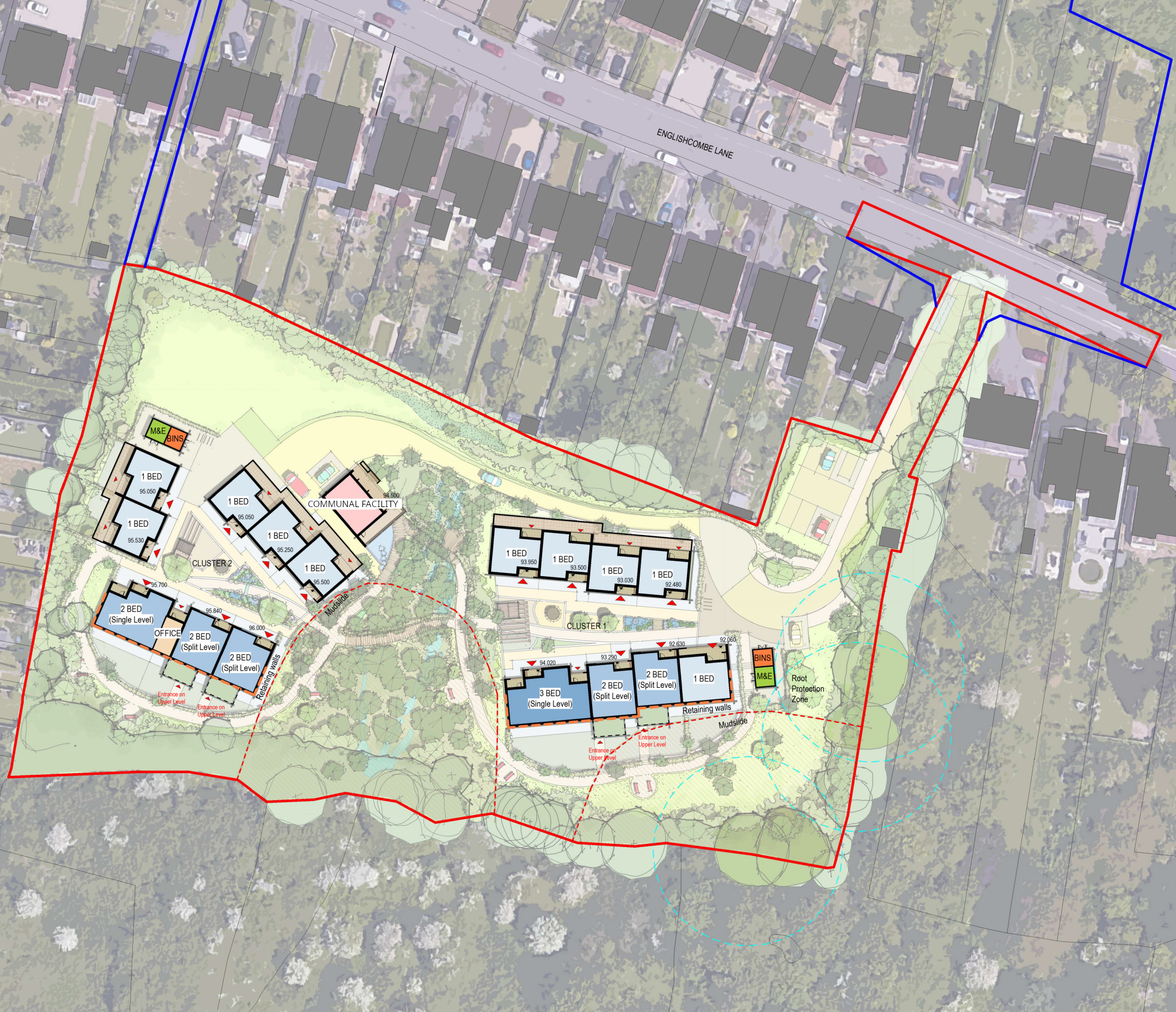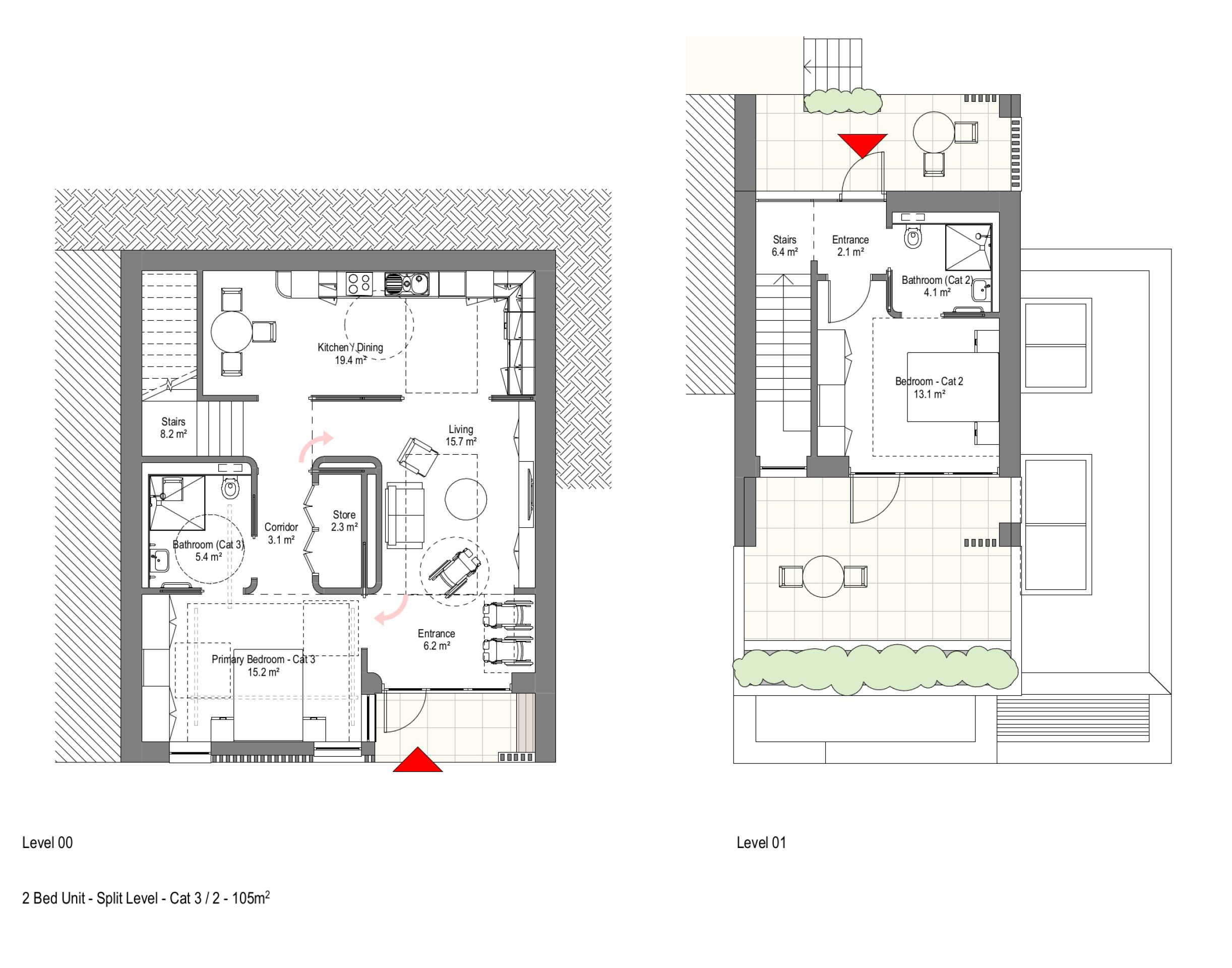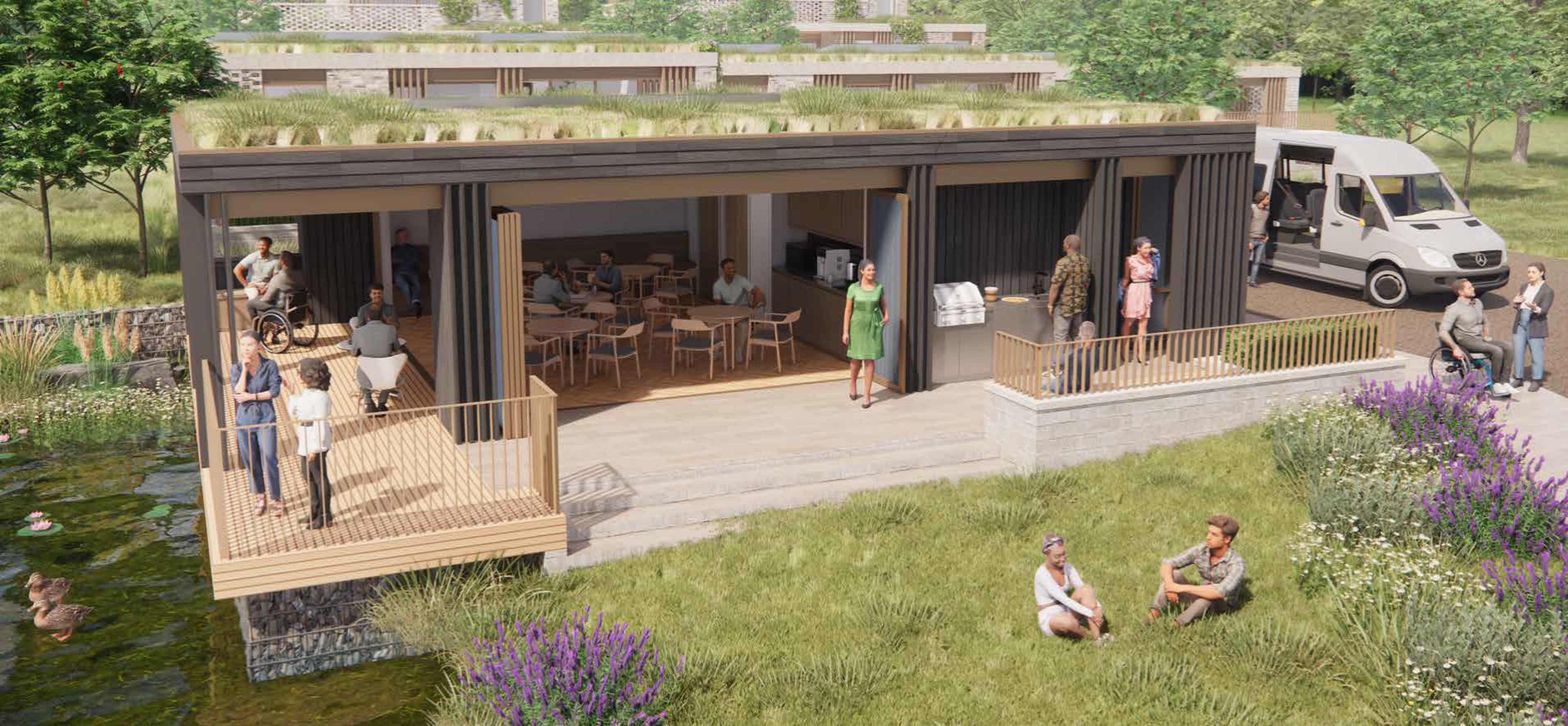Site Layout and Design Features
The plan shows a low-density design, with two clusters of dwellings. The clusters are connected by a footway and internal road. There is a small area of parking provided near the site entrance for visitors or carers, with further drop-off and pick-up spaces provided nearer to Cluster 2. The housing is a combination of one, two and three bedroom units, reflecting different needs of users. In addition to the dwellings, the proposals include a communal facility. This is an area of internal communal space for residents, carers and visitors to enjoy.
Internal spaces have been designed with resident’s experience and comfort in mind. Key features include creating spaces which are permeable, with defined private areas, controlled lighting and comfortable micro-climates. Spaces are adaptable for a variety of user requirements.
Internal layouts provide:
- Clear internal circulation paths for residents to move around
- A series of sliding doors to provide privacy and separation
- Spaces can be closed off to provide a sense of safety and protection for residents
- The open plan configuration ensures surveillance for carers
- Sheltered seating at the front facilitates social visits.
‘Sense Sensitive’ Design
The supported housing units have been designed in such a way as to incorporate sustainable design features as well as to create links with nature and the external environment, a ‘sense sensitive’ design approach. Features of the buildings include:
- Green roofs – providing not only a visual benefit, but also improving ecological value, enhanced building performance and the reduction of surface water runoff
- Materials which complement the site’s wider historical context, including brick of varying shades to reflect the colour of the iconic Bath stone, in addition to stone and timber for key features and elevations
- Energy efficiency – incorporating renewable energy and energy efficient design
- External spaces – sheltered seating areas and passive shading
- Accessibility – buildings are accessible for wheelchairs.
Communal Facilities
The communal facility provides an area of internal and external communal space for residents, carers and visitors. External areas include seating space, a shaded area and water feature. The communal facility has been designed to provide a visual contrast to the surrounding residential units, for example through the use of timber cladding, whilst at the same time retaining visual links through the use of Bath stone.
Building Materials
Building materials reflect historic references of the City of Bath World Heritage Site and Bath Conservation Area. Although modern in form, the buildings incorporate:
- Green roofs, planted with local grasses.
- Elevations of the residential units use variations of buff brick, together with large format, modern picture windows, creating visual links to interior and exterior spaces.
- Iconic Bath limestone is used extensively at the site base, landscape walls, and as coping, sills and parapets.
- Timber elements are used extensively throughout.







